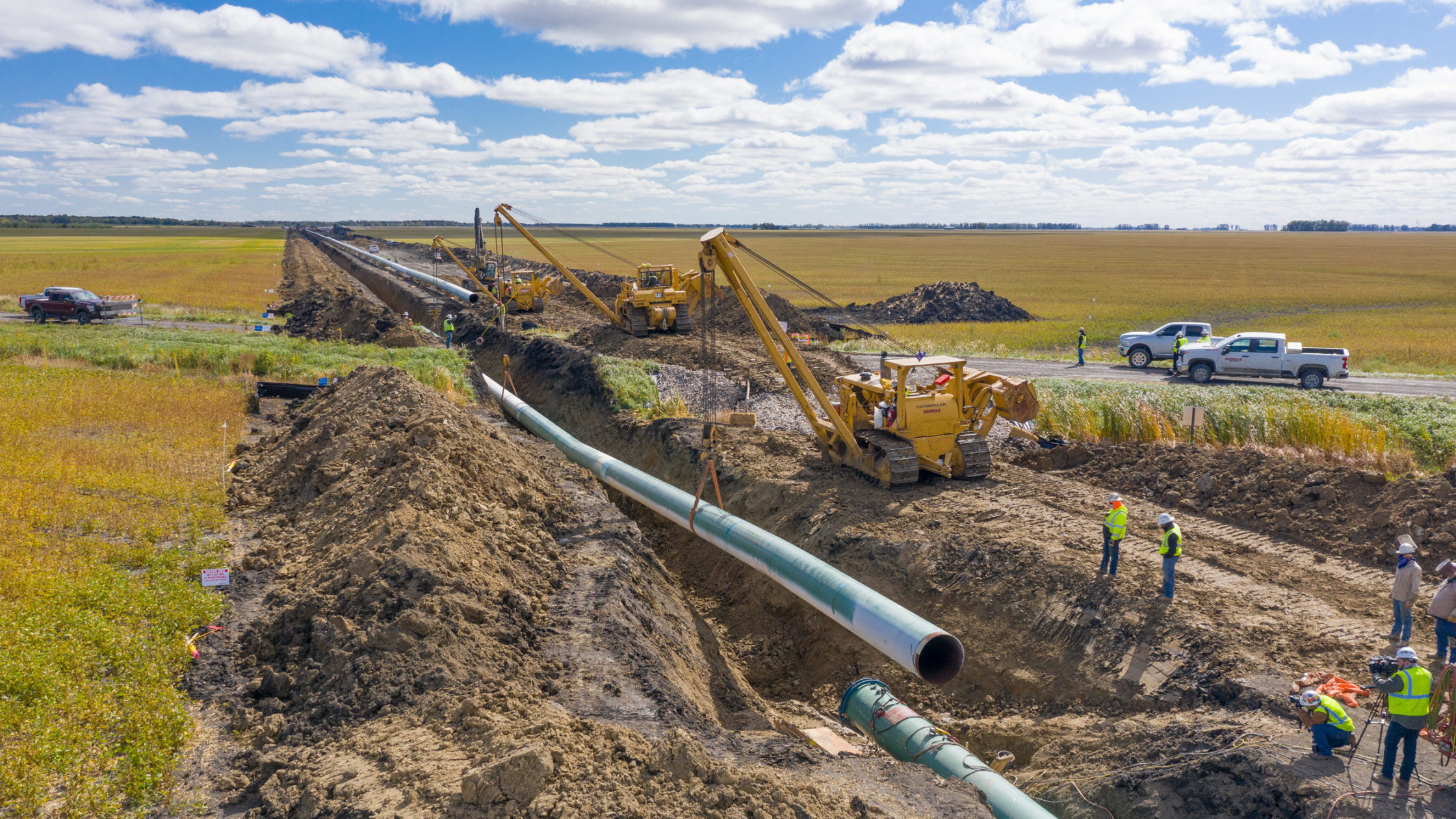Canadian oil producers have reached the light at the end of the pipeline – the Line 93 pipeline, that is, known previously as the Line 3 Replacement Project.
The benefits of the new 1,765-kilometre pipeline from Alberta to Wisconsin are clear after just three months of full service, says a leading energy analyst.
“Western Canada has struggled for a decade with the adequacy of pipeline capacity to deliver its product to market. The importance of Line 3 is in practice right now,” says Kevin Birn, vice-president of North American crude oil markets with IHS Markit.
“We have a lot of installed existing production capacity that hadn’t been able to fully run up, and now we’re seeing that. We expect to see western Canadian production and exports continue to push new record levels through the winter.”
Meanwhile in Minnesota, where the final leg of the pipeline was completed in October, business leaders say the project helped the region as it struggled with the impact of COVID-19, and has left lasting benefits.
“Our workers were busy most of this year and now have more money and support for their families,” says Paul Gustafson, vice-president of Clearbrook, MN-based construction contractor Gustafson & Goudge.
“Our team has gained more experience now and we have been able to do even more to invest in our company because of Line 3. Work is clearly winding down, but we will feel the great impact for years to come.”
Better prices
The Line 3 replacement project restores the pipeline’s capacity to 760,000 barrels per day. It had been running at approximately 390,000 barrels per day since 2008, when Enbridge voluntarily reduced rates to maintain pipeline integrity.
The new Line 3 has been running at or near its full capacity since coming online, the company says. The new pipeline will have long-term benefit for oil producers, and in turn, government revenues, by helping improve product prices.
Without the new line in service, Birn says Canadian heavy oil could be trading at a lower price compared to U.S. benchmark West Texas Intermediate.
Today that differential is “normalized” at about $12 per barrel. Compare that to late 2018, when Canadian oil traded as much as $50 under WTI because of insufficient pipeline capacity.
In a December 2020 report, IHS Markit estimated that between 2015 and 2019, Canadian oil producers lost US$14 billion in potential value because of a lack of pipeline capacity.
Still on a razor’s edge
Completing the new pipeline is an important step to balance markets, but Canada’s oil sector remains on a razor’s edge between demand and ability to access customers.
If the full Line 3 had not come online in fall 2020, production in western Canada could have exceeded the capacity for it to be exported out of the region, Birn says.
“In the absence of it, western Canada may have seen quite a different price scenario than it is.”
Completion of the Trans Mountain expansion remains important for Canada’s oil producers, he says, as it will add “optionality” to access different customers around the world.
“We do see still the need for the Trans Mountain expansion… Although the growth in the Canadian oil sands is slowing, its potential remains, and in the energy transition optionality is going to be critical for upstream producers — which is key advantage of tidewater.”
The unaltered reproduction of this content is free of charge with attribution to Canadian Energy Centre Ltd.
